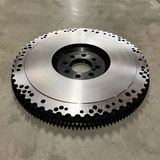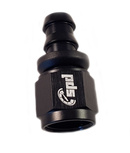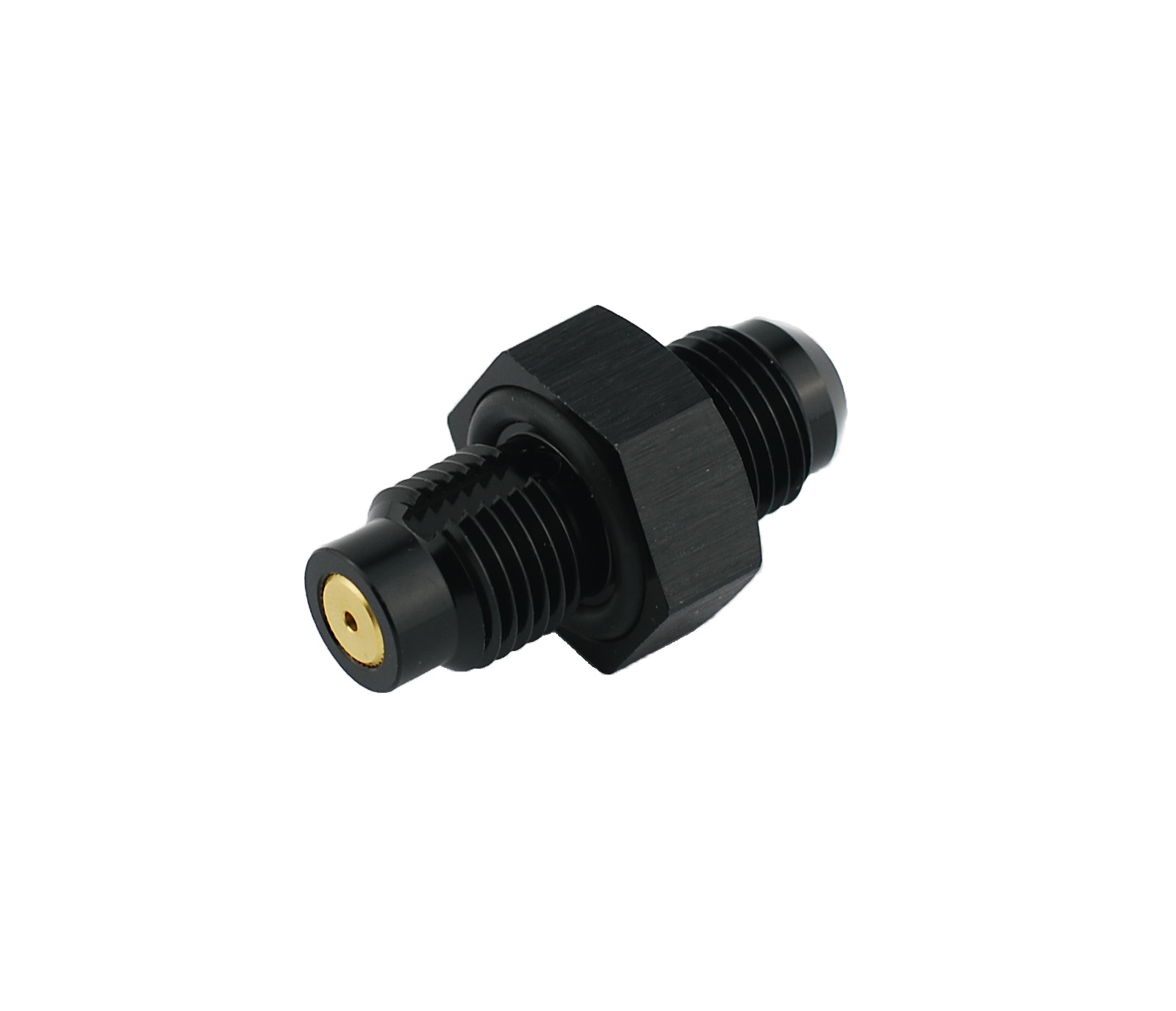Roll over valve / Tank venting
Information on tank venting or as it is called in the tuning industry - roll over valve.
- Introduction
- Function
- Can it hold a big amount of fuel?
- How do I get rid of the gases?
- My vent leaks fuel when I turn.
- Mounting
- Leakage
1 ▼
Introduction
Tank venting, originally called EVAP (EVAPorative Control System), has been solved by a so-called roll over valve (Roll over valve) in the aftermarket in motorsport and rebuilt vehicles. The tank vent must be led back to the engine's intake system, but is often vented freely on tuned vehicles.
A so-called roll over valve is a simple tank vent, in other words. This valve sits at the top of your tank / fuel cell and vents so that fuel pumps can suck fuel without imploding the fuel tank. Also, gases in the tank can expand without expanding the tank and its fasteners. In short, this is a hole helping the fuel tank to "breathe"
2 ▼
Function
The roll over valve has a loose steel ball in a vertical tube. This must also be mounted vertically at the top of the fuel tank in order for the ball to lie at the bottom of the pipe. Now gases can flow freely in and out of the tank = tank venting. If the car ends up upside down at e.g. in an accident the ball of gravity and the pushing fuel will roll to the top of the roll over valve and settle into a seat preventing fuel from flowing out = Roll over valve.
3 ▼
Can it hold a big amount of fuel?
The valve can withstand any large tank. The ball that holds tight to the seat not only has gravity to help keep it tight but also the weight/pressure of the fuel.
4 ▼
How do I get rid of the gases?
By connecting the roll over valve with a hose and hose fitting, you can lead the gases/fuel vapors out of the car or to the original evap valve/bleeding system.
5 ▼
My vent leaks fuel when I turn.
This is mounted at the top of the fuel tank, preferably in the middle area of the tank, so that fuel cannot be squeezed out when turning when g-forces occur. The hose that leads away the fuel vapors must also be pulled up approximately 20-30cm to further prevent fuel from leaking out.
6 ▼
Mounting
1. Roll over valve
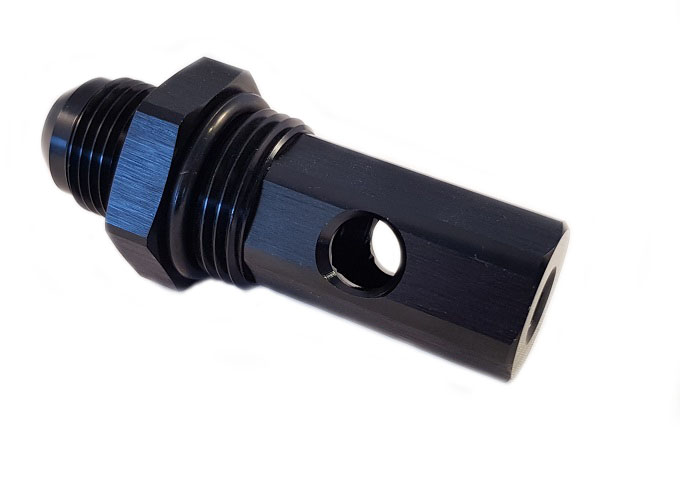
SPD roll over valve
The SPD valve is threaded directly into an AN12 thread in an SPD tank or where there is an AN12 female. No drilling or cutting is required. The thread then points upwards.
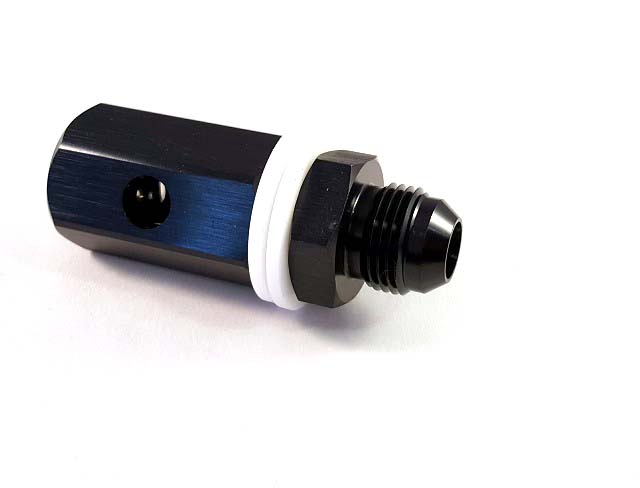
Universal roll over valve
This valve is mounted in a hole. The threaded part is mounted from the outside of the tank, pointing upwards. The other part is threaded on from inside the tank.
2. Bulkhead fitting
When the valve is mounted, and the thread points upwards, you can plan the outlet for the tank ventilation. This must be pulled out of the car, away from the driver's compartment so that no fuel vapors affect the driver's environment. Drill a hole and use the below tank grommet to vent the fuel fumes. This can be advantageously mounted in the floor.
3. Hose routing
Install a hose between the roll-over valve and bulkhead fitting. As there is no pressure in this system, Push-on fittings can be used to connect the roll-over valve with the bulkhead fitting. The hose must be routed upwards a bit so that g-forces when turning do not push fuel out through it.
7 ▼
Leakage
If the valve leaks fuel when you turn, the fuel is probably being pushed up into the vent with the help of g-forces that occur. The valve is most likely mounted at the top along the edge of the fuel tank. And the hose that leads away the fuel vapours out of the car is not pulled up 20-30cm from the valve to prevent fuel from leaking out due to g-forces.
Solutions:
- Pull the hose that leads away the vapours straight up 20-30cm and then out so the fuel cannot be forced out.
- Or you put the hose in a loop so the fuel can't be pushed out.
- Or you can fit this upgraded roll over valve for tank venting. this vent is both much smaller and more flexible than the old versions, and it is leak-proof to prevent fuel from leaking out.
▼
▼
-
- Fuel system: Components and assembly
- Fuel system: Common problems
- Choose the correct fuel injector
- Check valve - Information
- Compare Fuel injectors
- Different Type of Fuels [Gasoline or Ethanol?]
- Different types of fuel systems
- Fuel catch tank / Fuel surge tank
- Fuel cell
- Fuel filter
- Fuel pressure regulator
- Fuel pump
- Fuel Pump Hanger - Information
- Fuel rail - Information
- Injector flow - Horsepower rating
- Injector size
- Tank ventilation / Roll over valve

















